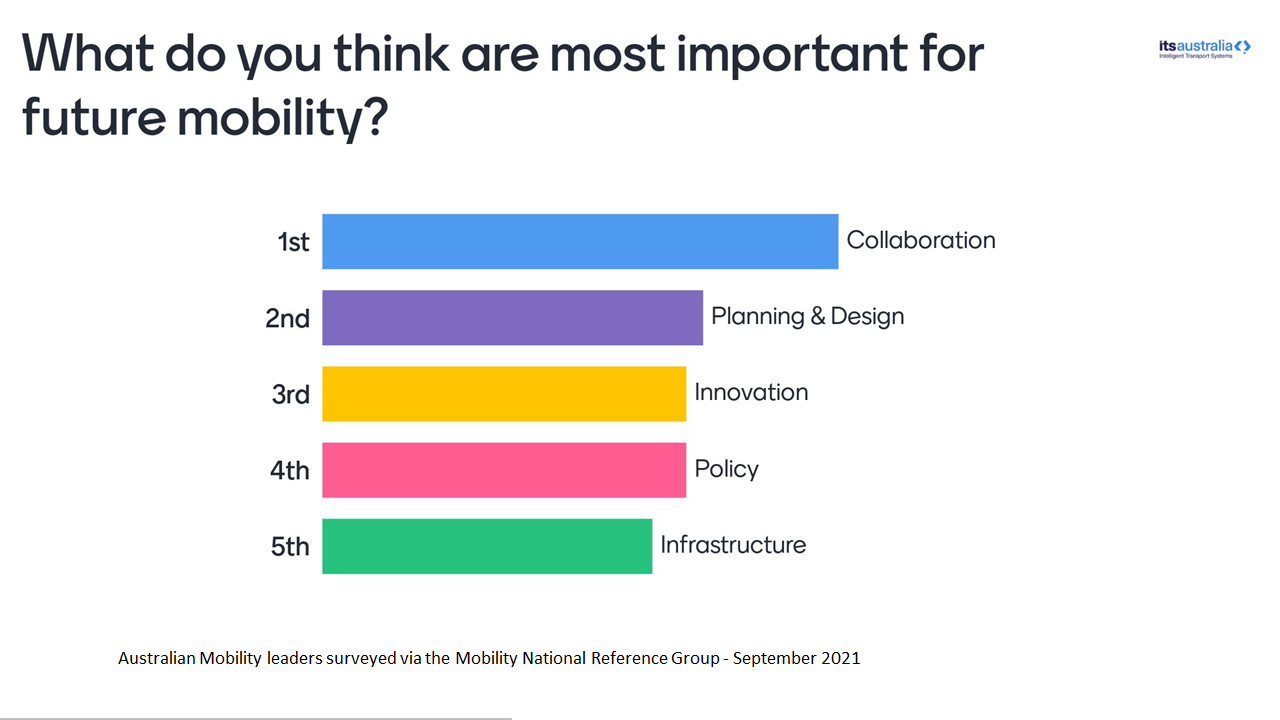3 July 2019
ITS Australia Vision Statement for Mobility

ITS Australia
Sign inSearch Menu
- Future Mobility
- Mobility Vision Statement
Mobility Vision Statement
Mobility Vision Statement
ITS Australia Vision Statement for Mobility
Mobility innovation offers the potential to improve access to information and expand customer choices, increase network capacity and transport sustainability while improving equity and environmental outcomes.
To support these goals ITS Australia undertakes to work with government, industry and academia to shape opportunities for new mobility in collaboration through both research and trials nationally and internationally.
The Mobility National Reference Group meets regularly to review these goals and develop shared approaches to deliver best outcomes for mobility in Australia. This group was established to continue the collaboration fostered during the development of the ITS Australia report Mobility as a Service in Australia: Customer insights and opportunities.
The steering committee is made up of project participants and other key industry players to ensure a broad range of expertise can contribute to and collaborate on the development of Mobility as a Service in Australia. Through sharing updates on activities in respective jurisdictions and organisations; including research, trials, and international engagement.

Modal mix for the future of Mobility
There are numerous iterations of the Transport Pyramid with many currently including at least 5 modal segments, with the only consistent distribution showing active transport as most favoured and private cars least, the segmentation of other modes don’t necessarily reflect their utility and impact. This structure is generally illustrative of the relative current performance of each modal option against accessibility, sustainability and cost but in developing a vision for the future of mobility that is not the way it should always be.
In reviewing the 2018 ITS Australia Vision for MaaS, while the importance of reducing reliance on private cars was determined to still be a key element of the future of mobility, there was also recognition that while active and public transport are the most effective modes for short trips and in reasonably high-density environments respectively there are a large number of both trip types and jurisdictions that make those modes less available.
This supports a more collective segmentation model as lo
ng-term transport modelling shows that sharing of any mode is the key as with the average car occupancy being 1.3, large scale private vehicle reliance is not sustainable.
This adaptive model enables a more flexible transport mix to ensure optimal trip type and customer needs are accommodated. The goal intended to identify any latent demand and allow for more appropriate allocation of resources. Building a more adaptive and utilised transport fleet that is, sustainable, accessible and equitable.

For more information or to get updates on Mobility in Australia please contact Stacey Ryan, Policy Manager ITS Australia.

Modal Future of Transport Pyramid

Read more of ITS Australia's Statements & Submissions